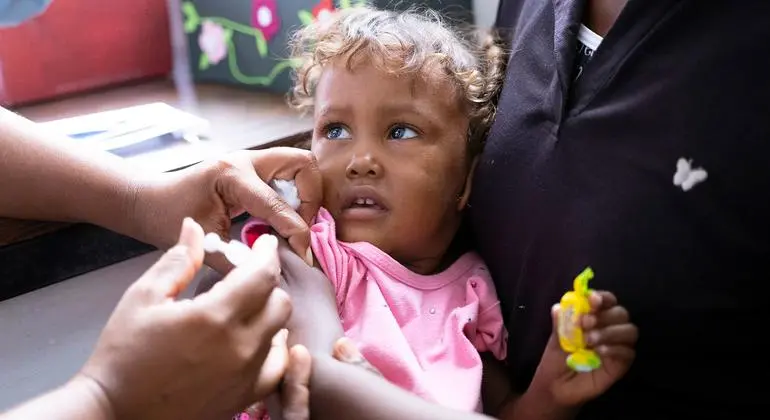According to a new update on Wednesday from the World Health Organization (WHO), 35 countries in five regions in the world have now reported more than 1,010 possible cases of unjected acute hepatitis, or inflammation of the liver, in young people, because the plague is the first detected on April 5.So far, 22 children have died, and almost half of the possibility of cases have been reported in Europe, where 21 countries have registered a total of 484 cases.
Regional clues
This includes 272 cases in the United Kingdom – 27 percent of the total global – followed by America, whose total regional of 435 covers 334 cases in the United States, representing one third of cases worldwide.The next highest case content is in the West Pacific region (70 cases), Southeast Asia (19) and Eastern Mediterranean (two cases).
Seventeen countries have reported more than five possible cases, but the actual number of cases may be underestimated, in part because the improved supervision system is limited, said WHO.According to the latest assessment of the UN Health Agency, the risk of the spread of this pediatric hepatitis outbreak is “medium”.
Symptoms
Of the 100 possible clinical data available, the most common symptoms reported are nausea or vomiting (in 60 percent of cases), jaundice (53 percent), general weaknesses (52 percent) and abdominal pain (50 percent).The average time between the appearance of symptoms and hospitalization, is four days.In a laboratory test, which says that hepatitis A to E does not yet exist in the affected children. Other pathogens such as coronavirus are detected in a number of cases, but the data is incomplete, the UN Health Agency said.
Adenovirus lead
Adenovirus – which causes various diseases, such as colds, fever, sore throat and pneumonia – has become the “most frequently detected pathogen” in the case of pediatric hepatitis, which said.In Europe, Adenovirus was detected by the polymerase chain reaction test (PCR) in 52 percent of child hepatitis cases (193/368) so far; In Japan, only found in nine percent of cases (5/58).
Because of the limited supervision of Adenovirus in most countries, it is very possible that the number of cases of child hepatitis is actually higher than what is known today.To promote a better understanding of where the plague has occurred, which has launched a global online survey, which will also help compare cases at this time with data from the last five years.
Who has shared a voluntary survey in nine pediatric hepatrik global and regional networks that specialize in matters related to the heart and other organs, along with other specialist medical officers who work in the main national unit, request aggregate data as part of the investigation of global events.

